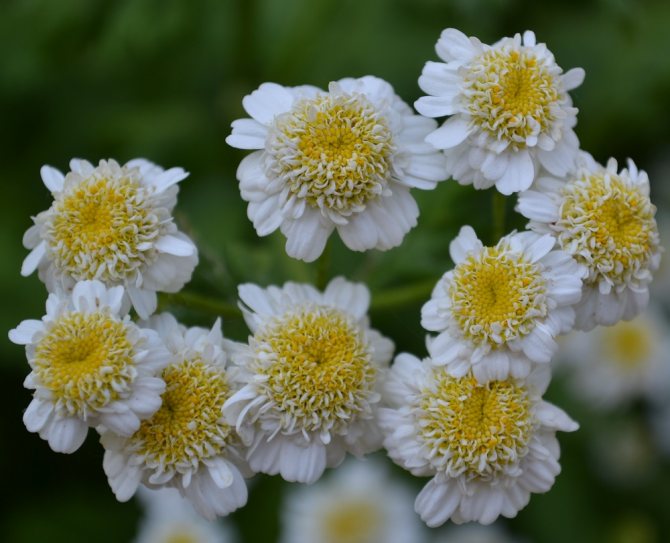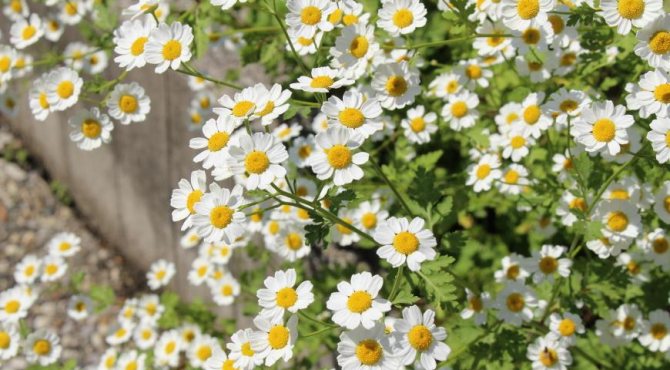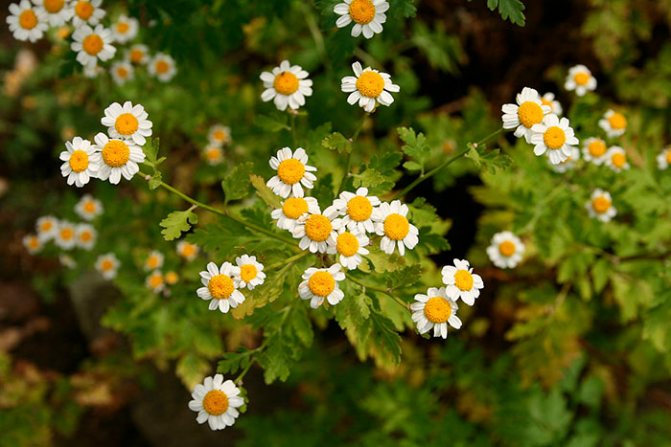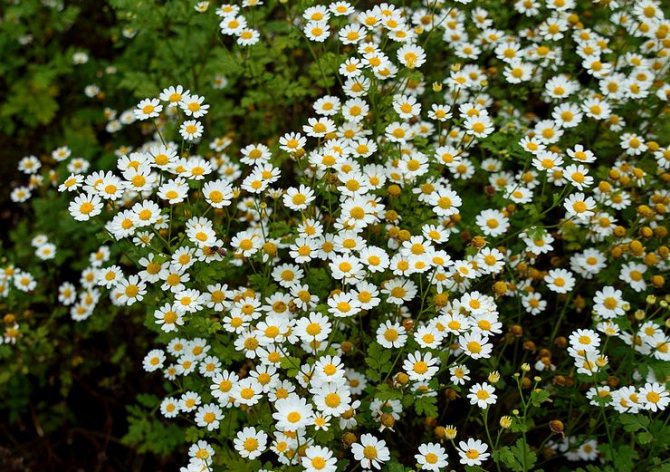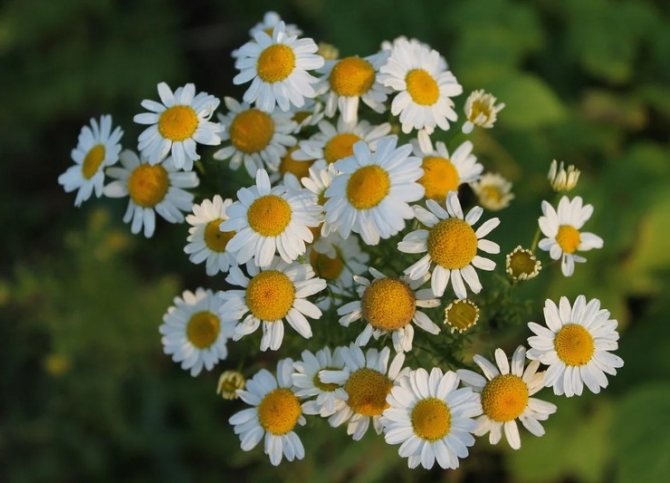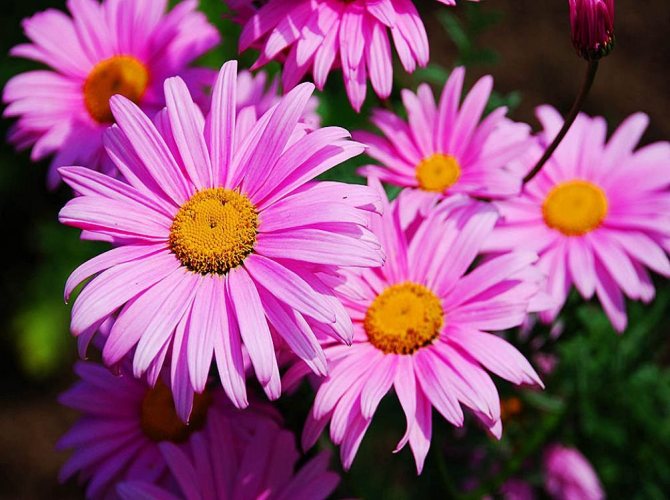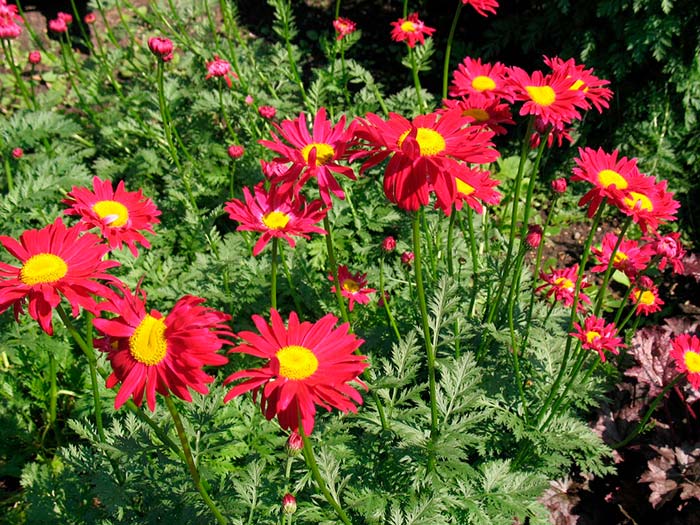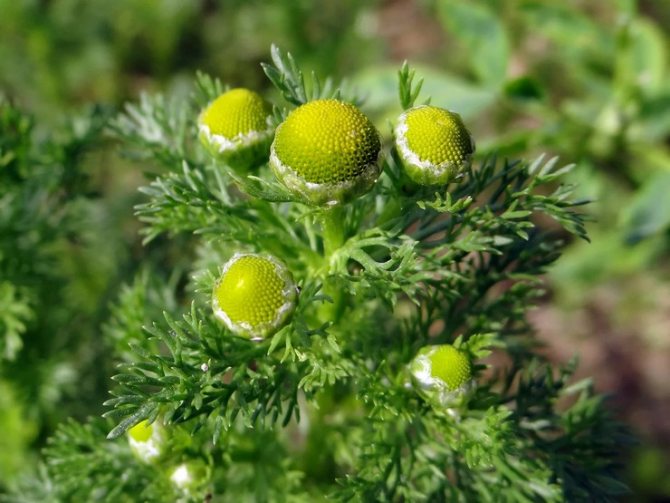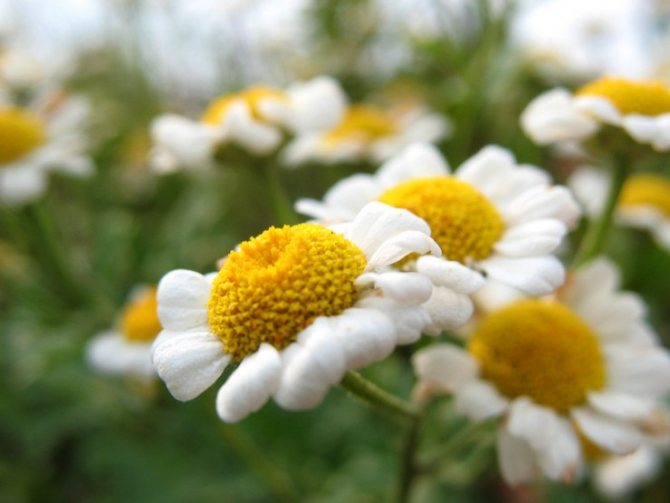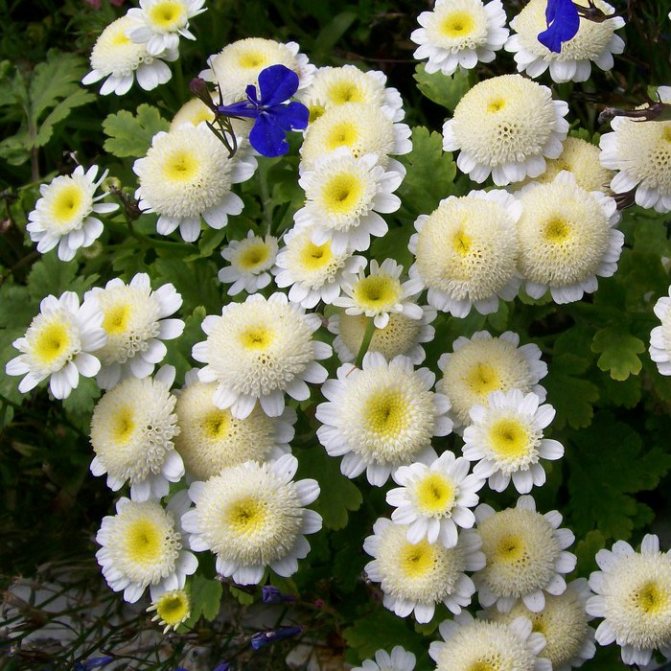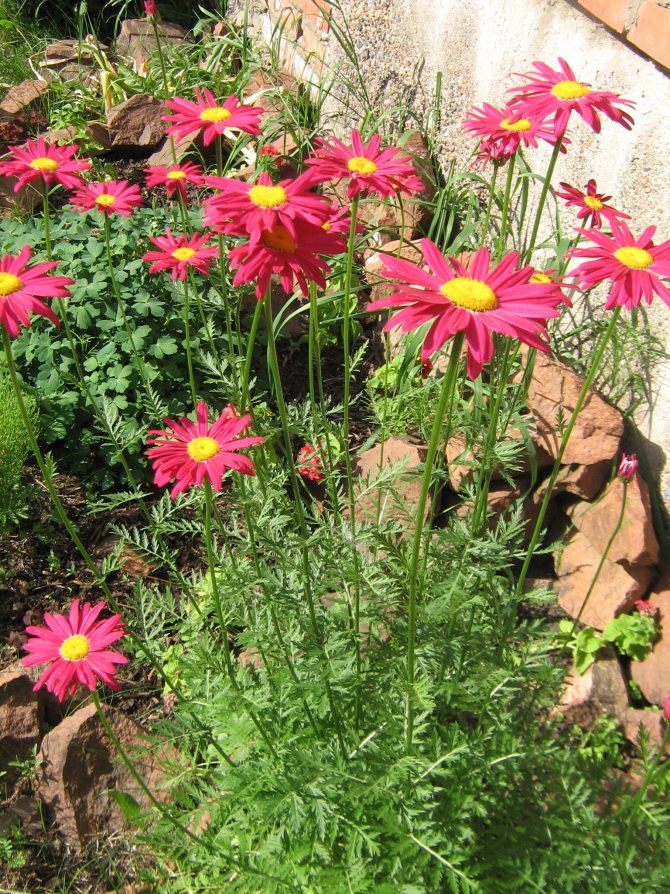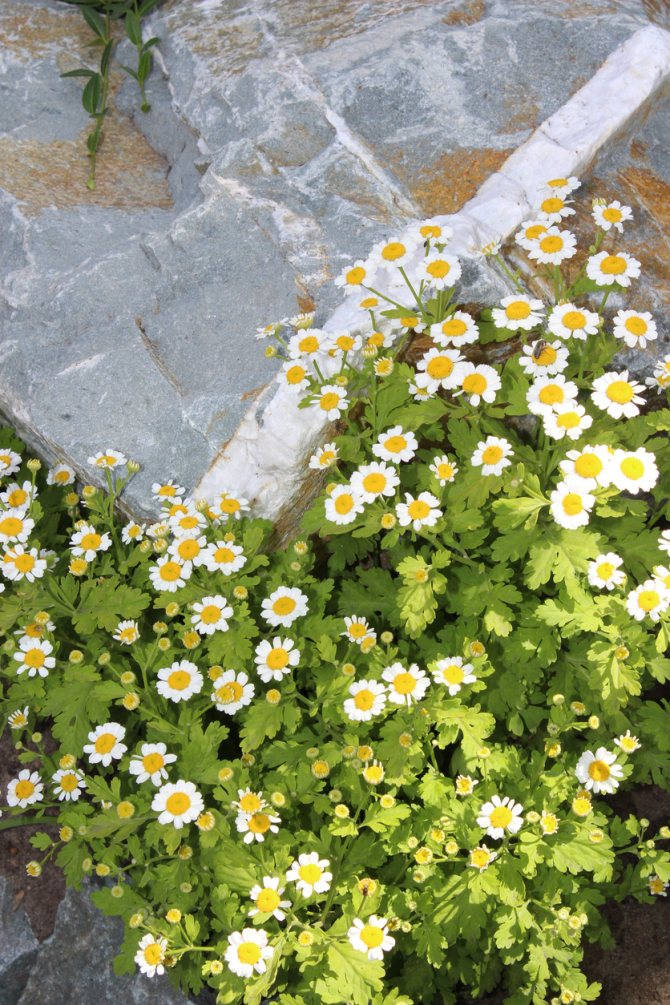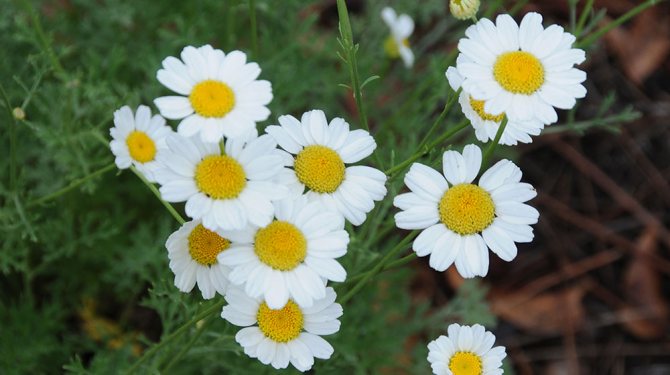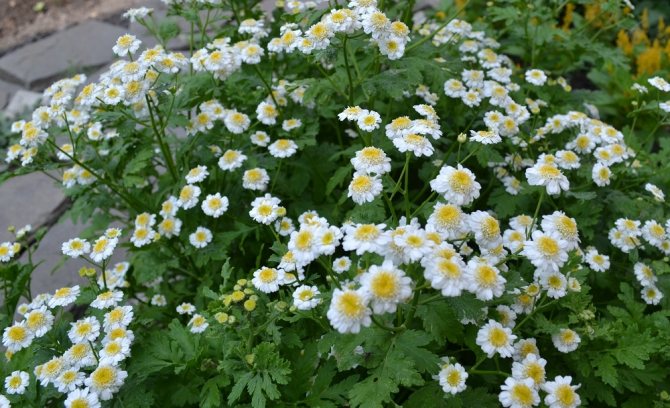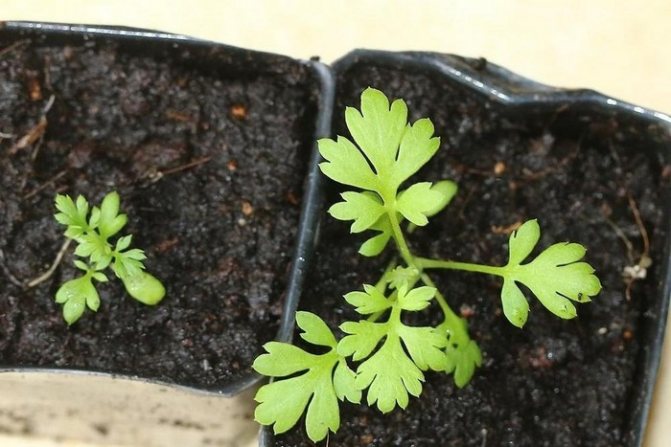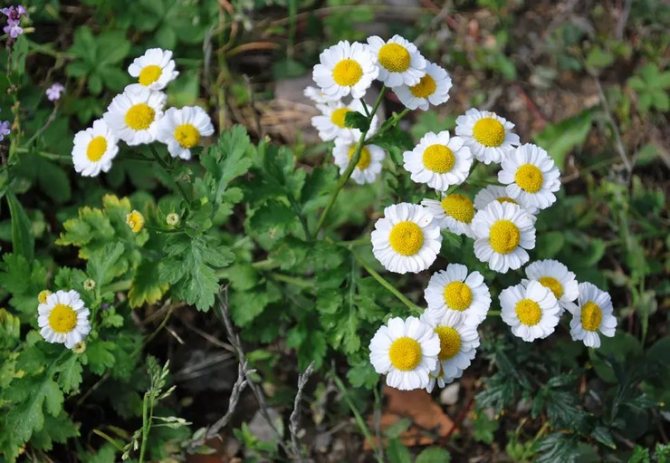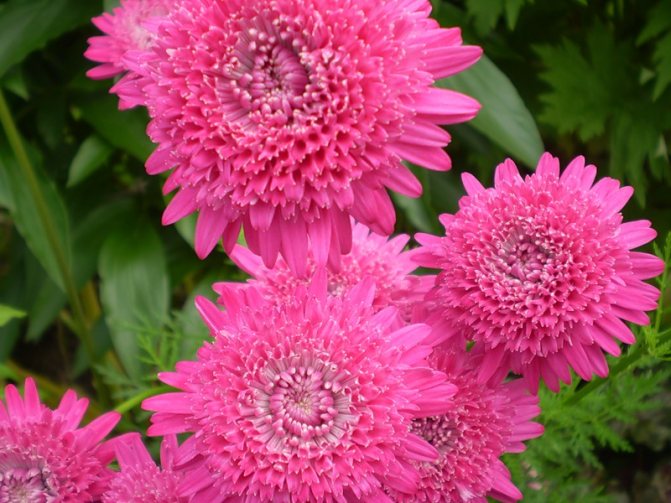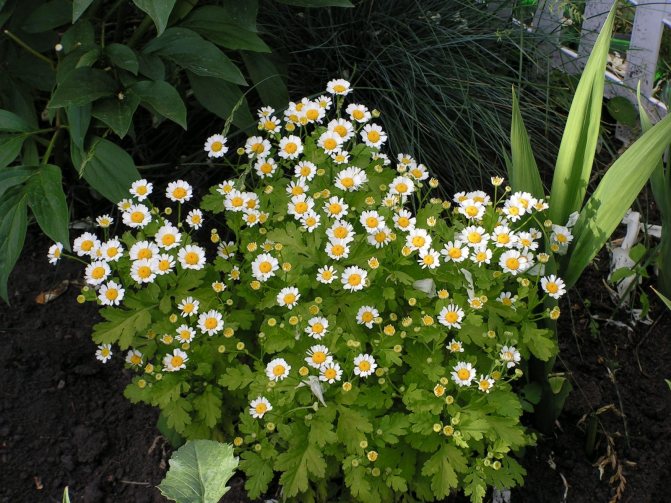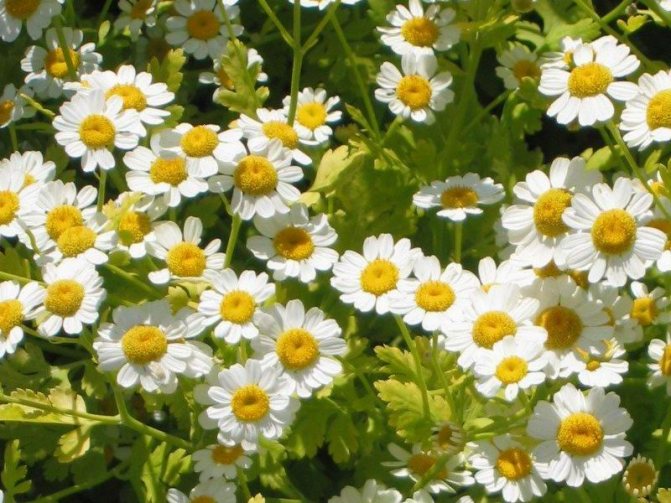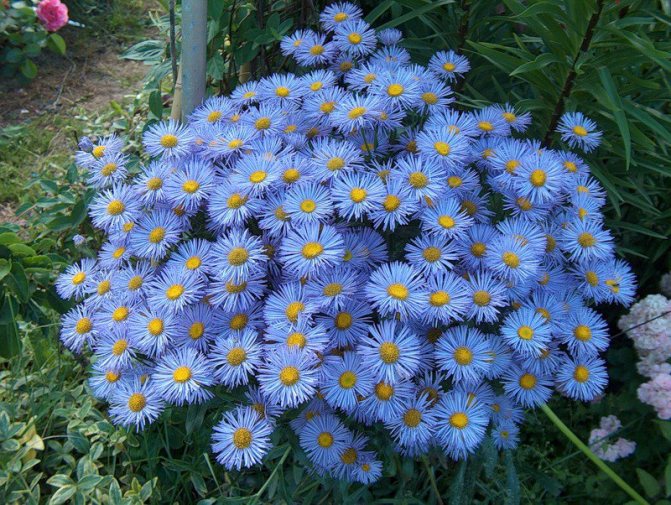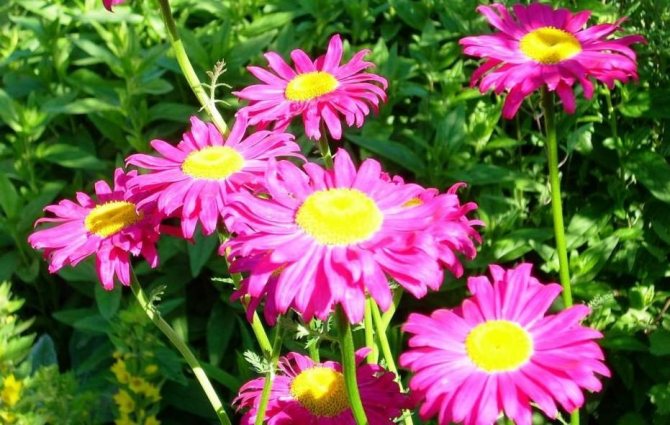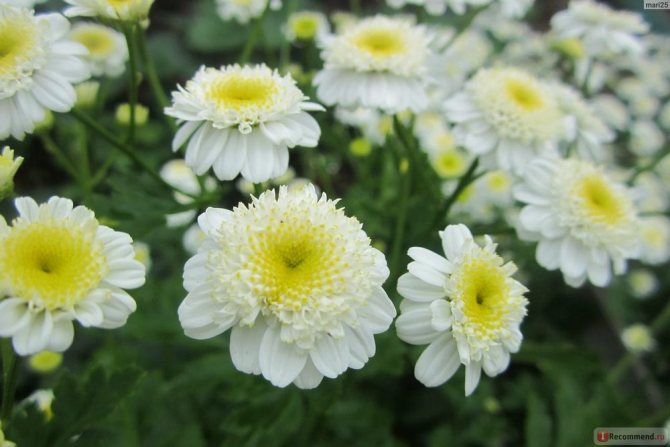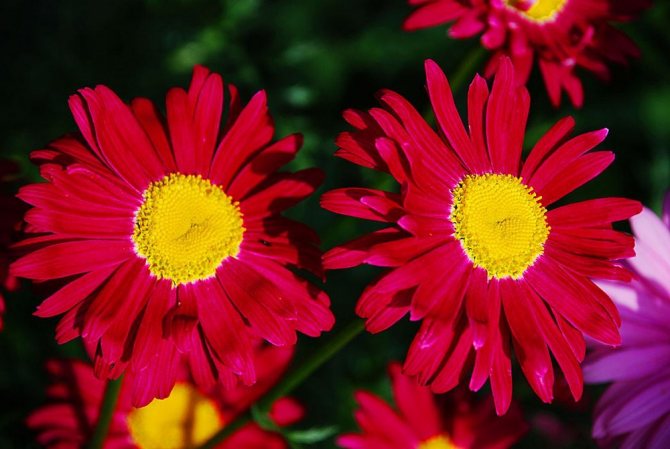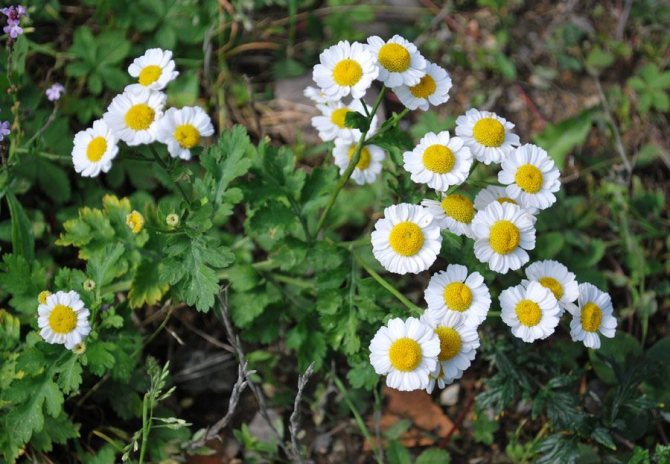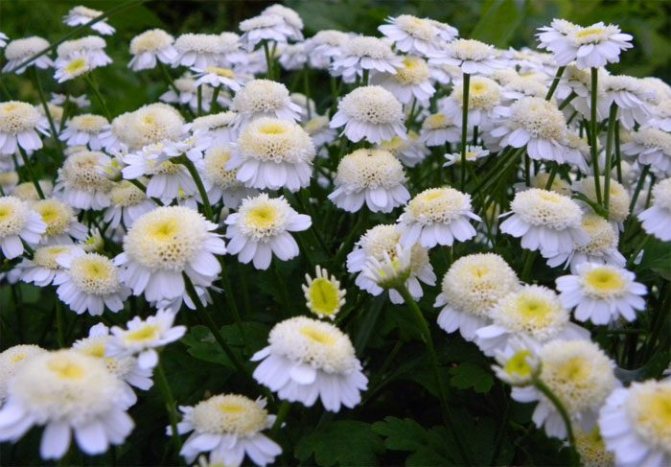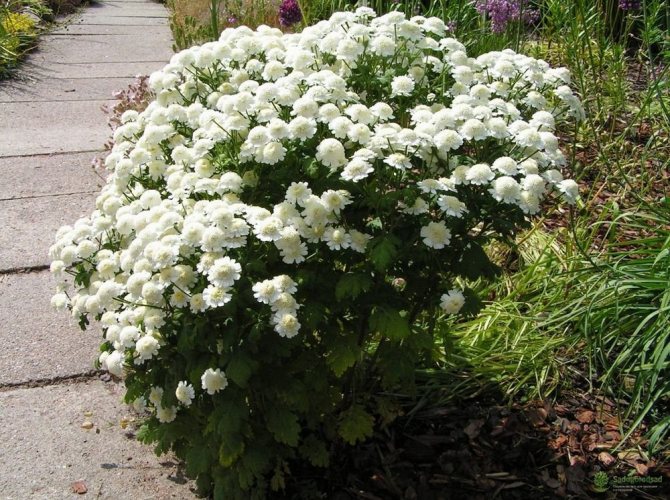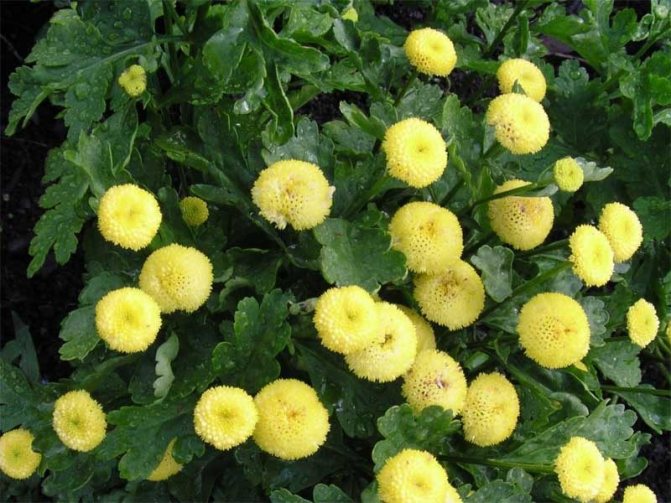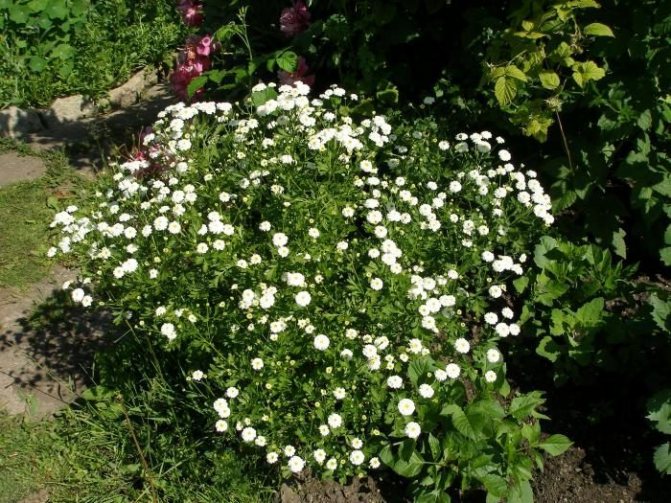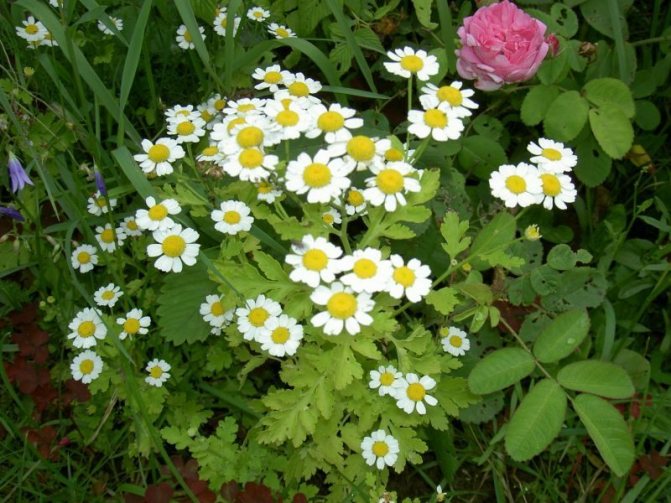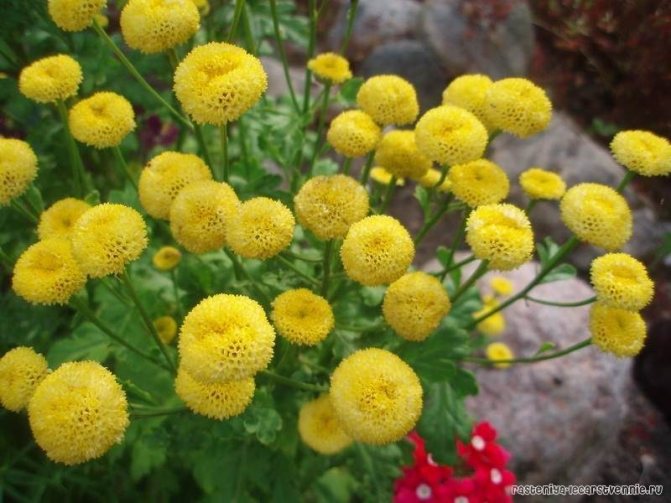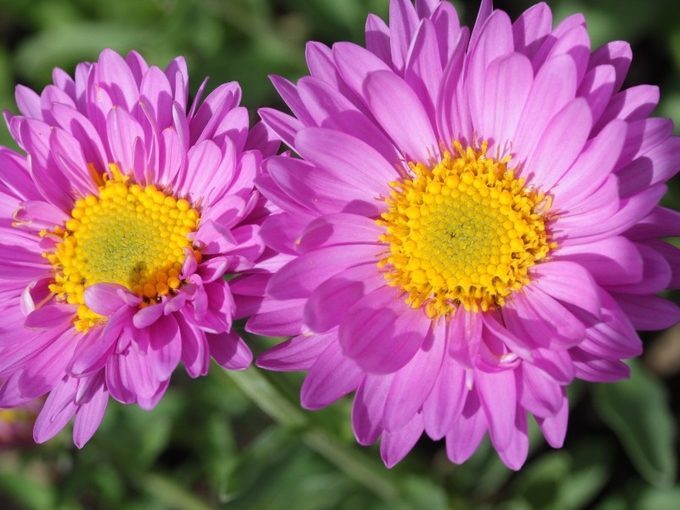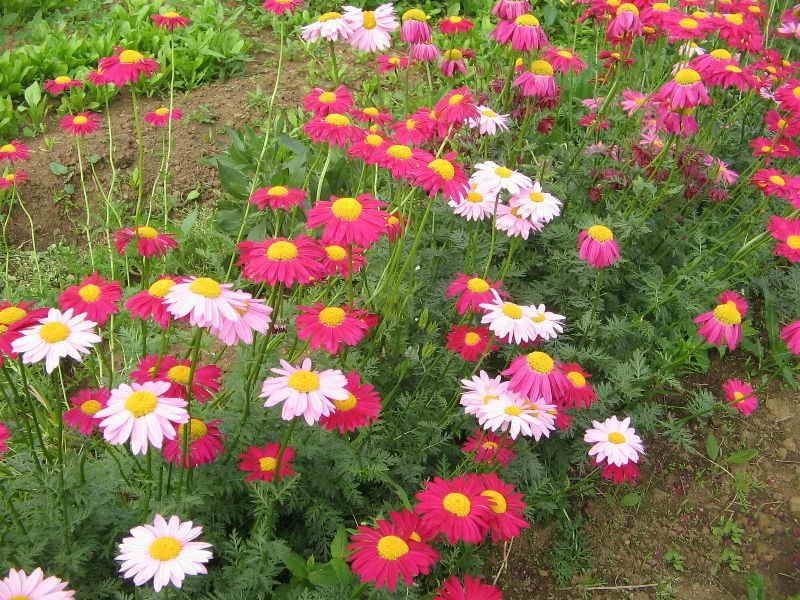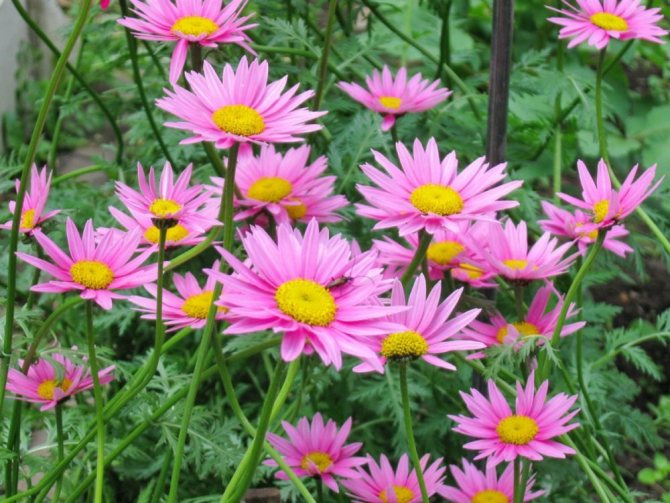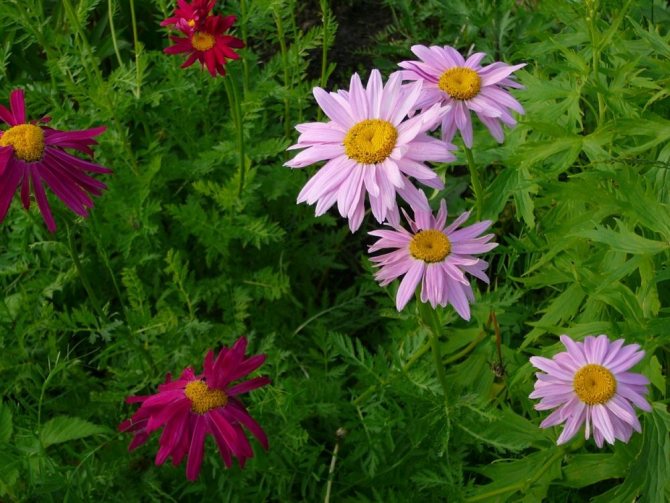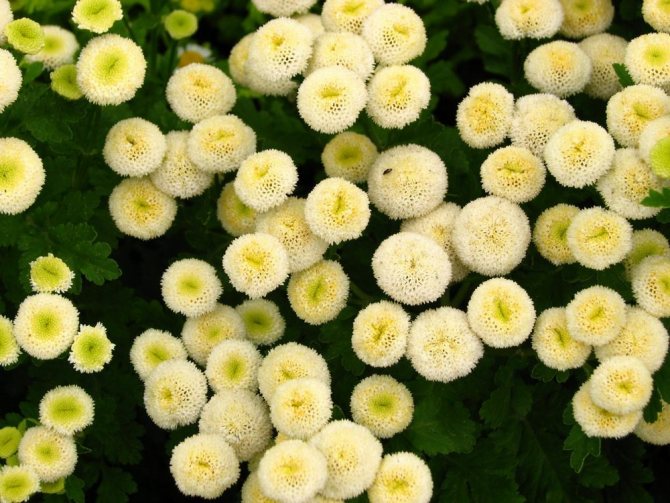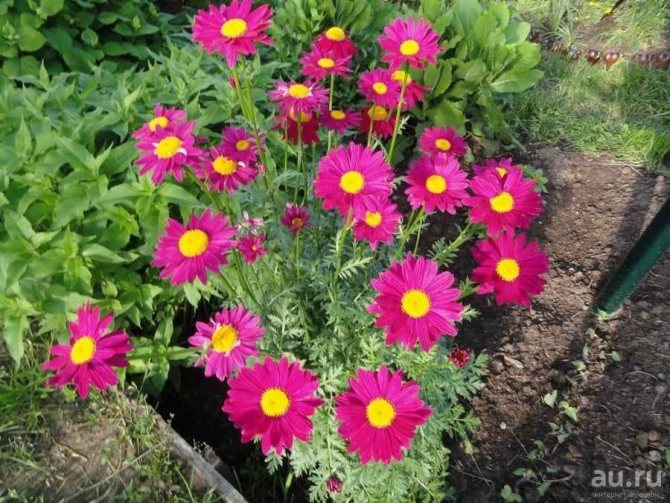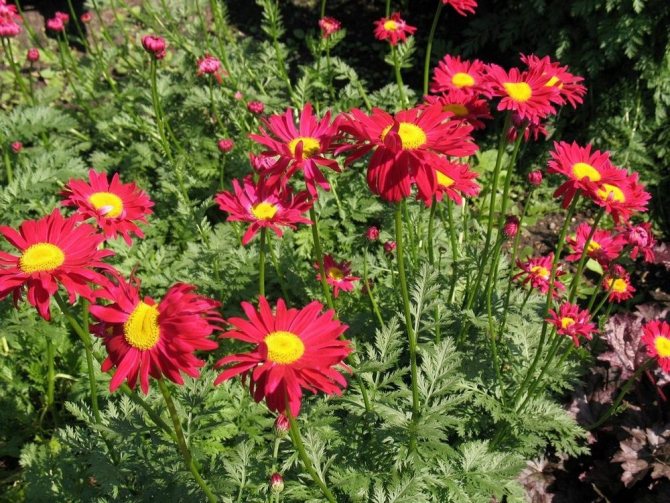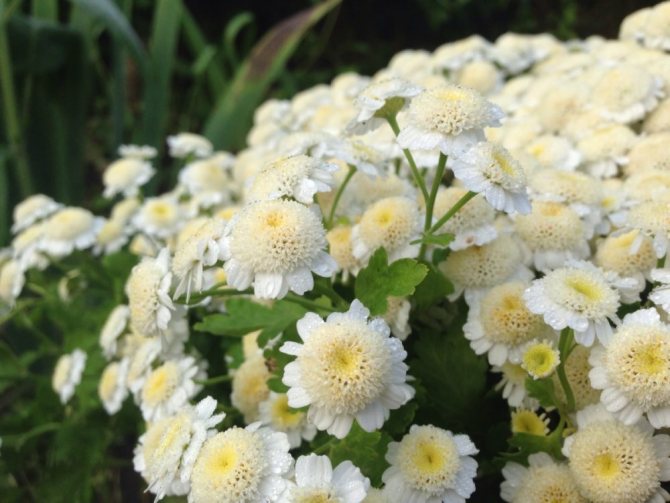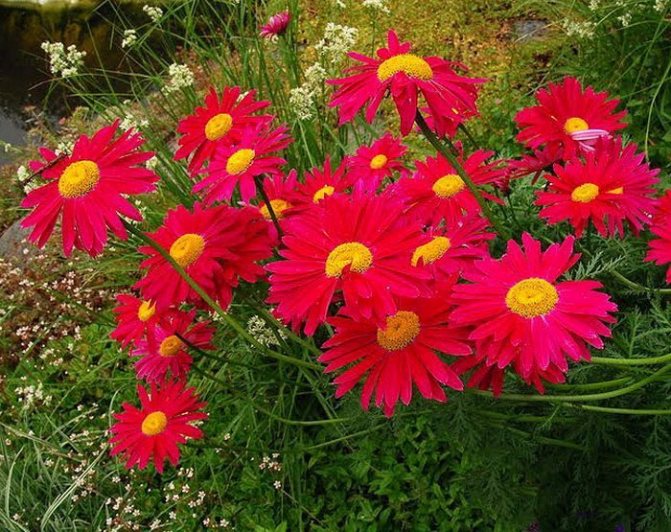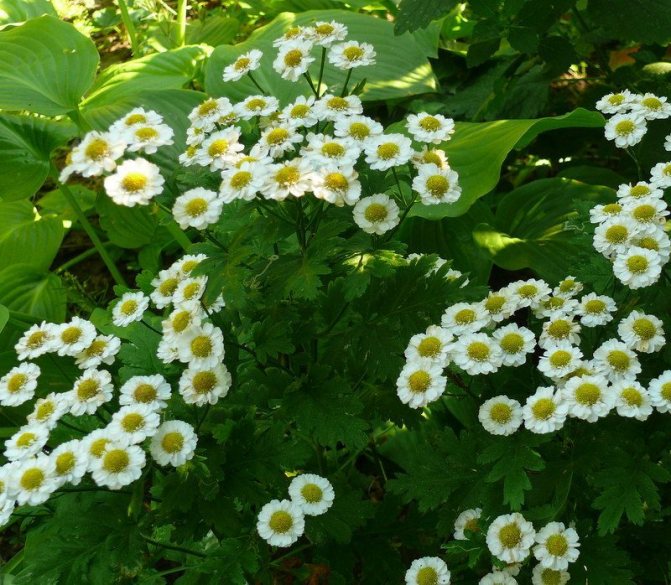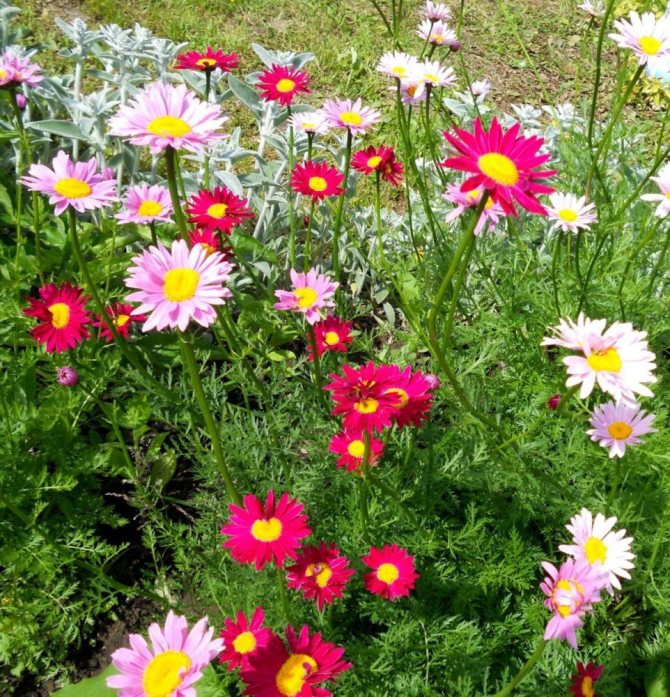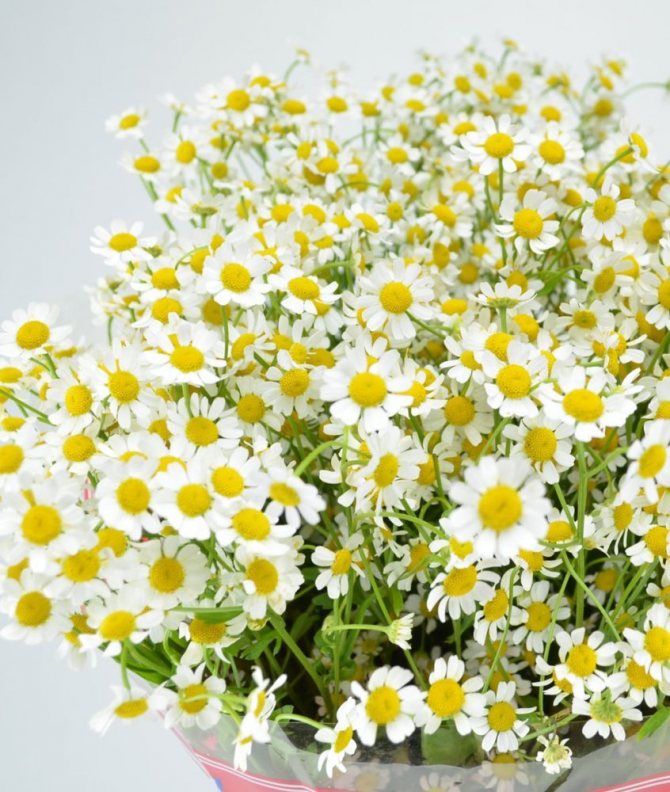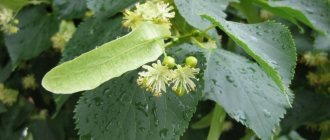Delicate pink feverfew flower
A beautiful flower bed in front of the house is a visiting card of any housewife. Matricaria can become one of the elements and a worthy representative; it is also popularly called feverfew. Do not be afraid - this is just a name so unusual, the flower itself is more than familiar to our latitudes and eyes. The beauty of the marikaria is motley, but does not need special care to maintain this look.
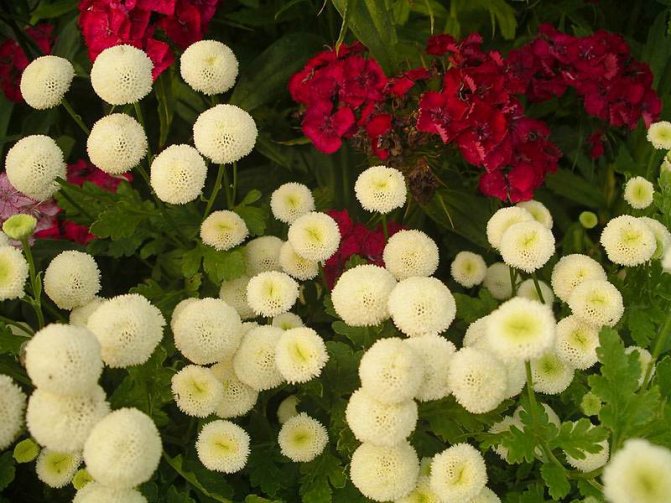
Beautiful white perennial
Description
Matricaria is a perennial from the Aster family. Translated from Greek, the name means "heat". The plant is found in the wild in southern Europe, in North America, in the Middle East.
In ancient times, the flower was valued not only for its decorative appearance, but also for its analgesic properties. Due to its analgesic ability, matrix tincture was often used during childbirth.
The shape of the plant is spherical, the crown is rather dense. Leaves are light green, multiple. Peduncles are elongated, the flowers themselves have a double texture, light color: white, beige, yellow. The flowering period of the matricaria is long - the plants delight with their decorativeness from June until the very end of autumn. Look at the wonderful photos of flowers.
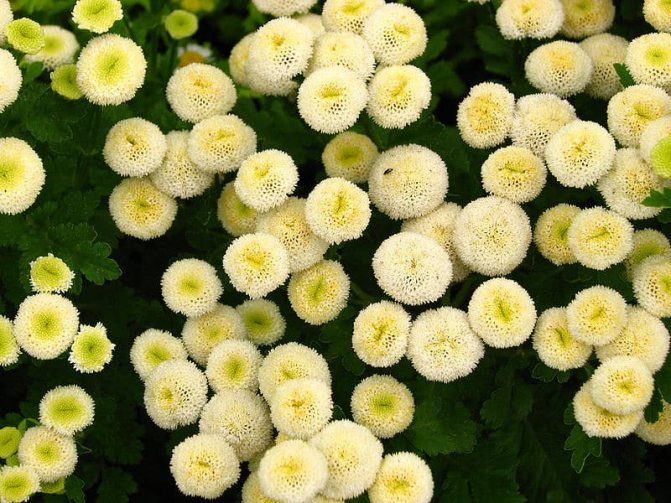

There are both simple varieties of matricaria, with one row of petals, and terry ones, with several rows. Simple varieties are similar in appearance to regular chamomile, especially when the petals are white. Terry varieties are more decorative, they have more petals, and the inflorescence itself is lush, more voluminous.
There are also varieties of matricaria annuals and perennials. However, most gardeners prefer to grow annual or biennial varieties, since the decorative qualities of the plant decrease with each new year. The height of the bushes also varies - there are very low varieties with a height of 10 cm, and there are also very high ones - up to one and a half meters.
Varieties
The most popular varieties of matricaria include:
- Goldbal. A plant with double petals of a beautiful yellow sunny shade. A real flower bed decoration.
- Snowball. Also a terry variety, but the petals in this case are white.
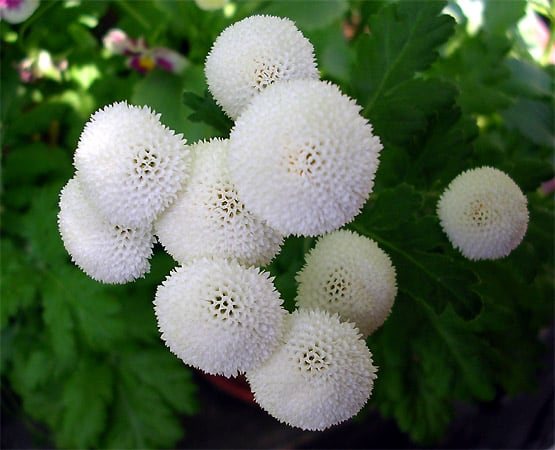

Famous and popular are also such varieties as:
- Brand;
- Robinson;
- James Kelway.
Matricaria varieties
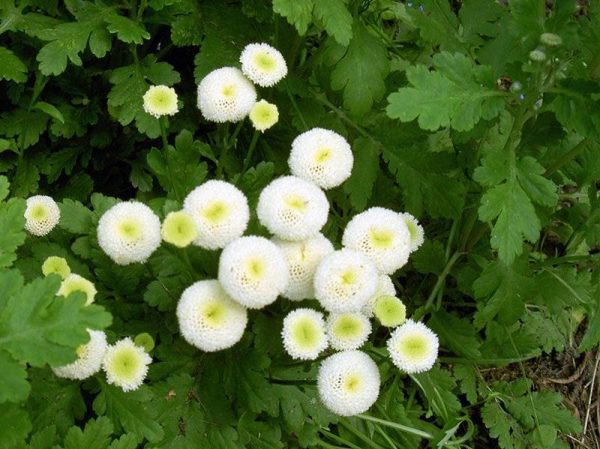

Matricaria (chrysanthemum) maiden... A medium-sized bush with branched stems, the petals of which are painted white-yellow. It begins to release buds in mid-summer, flowering ends in September-October. A perennial, but every year it needs a transplant, otherwise it loses its decorative effect. The plant can be found in flower beds, it is also used in the design of paths
Balsamic matrix... Tall branched perennial. The stems can be up to one meter. Often used to decorate flower beds. White petals darken by autumn and become almost brown. This unpretentious variety feels comfortable in any type of soil. The plant is light-loving, therefore, when choosing a flower bed, you should focus on the south side.
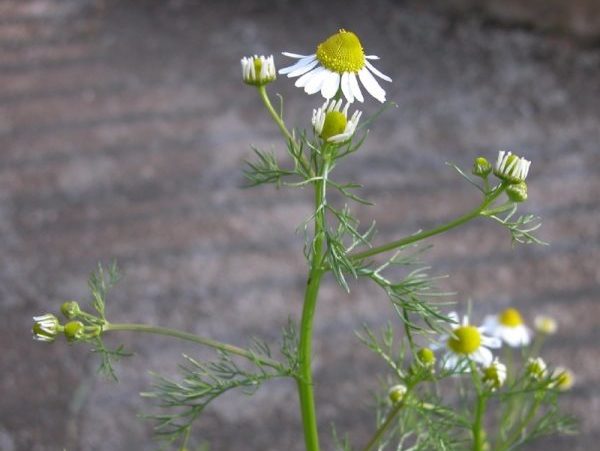

Chamomile officinalis... A short bush with a specific aroma. The leaf plates are pinnate. The stem is straight, reaching a height of about half a meter.At the tops of the stems are the corymbus inflorescences. Flowers can be white, less often yellow. In garden plots, this flower looks good with wildflowers.
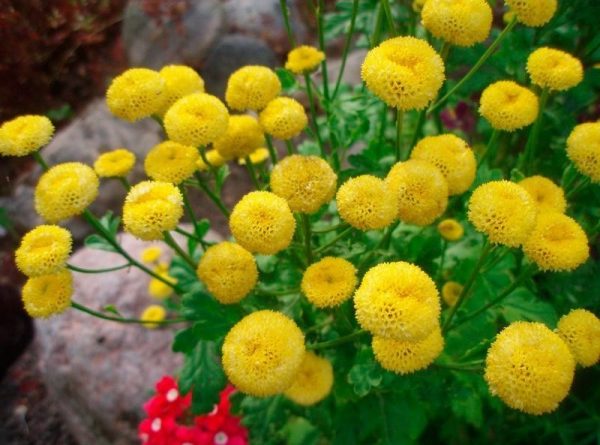

Matricaria "Golden ball"... The variety can often be found in flower beds and flower beds. A compact, low-growing bush reaches a height of no more than 30 cm. The flowers are spherical double golden-yellow shades. Flowering pleases the entire summer period.
Chamomile Chikhachev... The decorative variety is distinguished by its lush flowering. A branchy, low bush can reach a height of no more than 30 cm. There are few leaves, long stems, on which individual inflorescences grow. Often this type is used in the design of alpine slides, or on rocky soil, where other plants grow very poorly.
Pink feverfew... A medium-sized culture with a height of just over half a meter. Stems are straight and even, on which feathery leaves of light green color are located. The flowers in the form of baskets are pink, crimson or purple in color. Often grown for decoration and cutting.
Growing conditions
Let's find out where the matrix will grow best in the garden.
Plot
For full development and long-term flowering, a plant needs an open area, well-lit and warmed up. A sparse shadow is acceptable - for example, from nearby bushes, trees. In a very shaded place, the matrix will grow normally and will not be able to bloom.
The best choice is a slight rise. Low-lying areas in this case are not suitable, since the roots of the plant are very sensitive to moisture, they can rot from stagnant water in the ground. If the groundwater is close to the site, it is necessary to provide the bed with a drainage system.
The soil
The matrix does not impose special requirements on the composition of the soil. It is not necessary to prepare special soil mixtures for it - the usual garden, sod land, which is available on the site, is quite suitable. However, matricaria does not like acidic soil, and if the soil is just that, it must be calcified.
Output
A plant such as matricaria is not at all difficult to grow, and even a novice florist can do such a process. Let this bush please you and those around you with its beauty!
Landing
Let's get acquainted with the main nuances of planting the matrix in the ground.
When to plant
Matricaria is planted under the open sky usually at the end of May - at this time, in most regions, the possibility of recurrent frosts is already excluded. This is with regard to seedlings.
If the planting goes directly with seeds, then a similar method is suitable for the southern regions - and sowing in this case takes place in early May. After the seeds hit the ground, seedlings appear ten days later.
How to plant
First of all, holes are dug: between them it is necessary to maintain a distance of 25-30 cm.This distance will allow the roots of the plant to develop freely, and the shrub itself - to branch, be lush.
Planted at the correct distance, the matrix over time forms one lush carpet on the garden bed, consisting of many leaves and flowers. Seedling bushes are placed in prepared holes, the roots are straightened, sprinkling with soil.
After planting, the soil is tamped a little, and the plants are watered. It is also recommended to cover the bed with compost or dry soil. This measure will allow you to keep the moisture at the roots longer.
Care
Planting and grooming are important for the matricaria: having got acquainted with the nuances of planting, we will now consider the main points of care.
Watering
The plant grows safely in the open field and without watering if the weather is cool and rainy. But if hot days are given out, the matrix is watered to protect it from drought.
After moistening, it is recommended to loosen the soil to make the soil more permeable.In light, loose soil, the matrix feels great, blooms magnificently.
Top dressing
Fertilizers are applied for the first time 2-3 weeks after planting - just by this time the plants fully adapt and begin to actively develop. Before fertilizing, the soil should be loosened, thereby clearing the way for air and additional nutrition to the roots.
Both minerals and organics can be used to feed the matrix. Fertilizers are applied every 2-3 weeks.
Transfer
The plant tolerates transplantation quite safely, therefore, if necessary, this procedure can be carried out even during the flowering period of the matrix. Landscape designers, using this property of a plant, often fill voids with a matrix.
Pruning
For the decorative appearance of the flower bed, it is important to remove dried matricaria inflorescences in time. Withered inflorescences not only spoil the look of the flower garden, but also take away nutrients from the still flowering buds. In addition, if you do not tear off the old inflorescences, new ones will not be able to bloom.
When the perennial matrix finishes the flowering period, it is necessary to inspect the bushes and remove broken, damaged, dried shoots. In addition to the ugly appearance that such shoots give to the site, they can also become a breeding ground for infections, become a wintering place for pests.
Wintering
Since the matricaria is a southern flower, it is unlikely that it will survive our harsh winter without shelter. Therefore, before the cold weather, it is necessary to cut the plants and mulch their root area with organic matter. The cut bushes themselves are covered with spruce branches or agrofibre.
The good thing about the matrix is that it does not require global care. This plant is also chosen by busy summer residents, who do not have the opportunity to appear often on the site - the matrix quite safely tolerates irregular grooming procedures. But these procedures must be present in any case.
Related videos:
Pyrethrum in landscape design
This flower has many uses in the garden. It is often planted in flower beds for edging. For such cases, it is better to use undersized species. Also feverfew is suitable for border decoration. Its variegated flowers are adorned with mixborders, rabatki.
You can create a flower bed of pyrethrum varieties of different shades or combine it with:
The culture takes root well next to ornamental bushes and trees. It is planted near them in separate islands.


Reproduction
Matricaria can be propagated in several ways:
- dividing the bush;
- seeds;
- cuttings
The first method is the most difficult and is usually used only for the reproduction of the rarest and most beautiful species of matrix. With this method, all species characteristics of the variety are fully preserved, therefore the method is appreciated by breeders and professional gardeners.
The seed option is the most common and simple one, used by most summer residents and amateur gardeners. We examined it in detail above.
Cutting is used when this particular variety is important. The method is simpler than dividing a bush. Cuttings are cut from May to July and then rooted in wet sand. After three weeks, young plants take root and are transplanted to a permanent place.
Dividing the bush
This technique is used for especially valuable species, where it is necessary to accurately repeat the appearance of the plant, its varietal characteristics. For certain species, this procedure is a prerequisite for growth, since the bush grows rapidly and ceases to bloom so actively. Another problem associated with this is soil sodding.
Advice! The optimal period for dividing the bush is the end of active flowering. Those plants that were divided at the end of summer have time to prepare for winter and strengthen themselves.
It can be divided provided that there are several rosettes of leaves.With this method of reproduction in the spring, the newly formed buds should be cut off, as they can lead to the death of the entire bush.
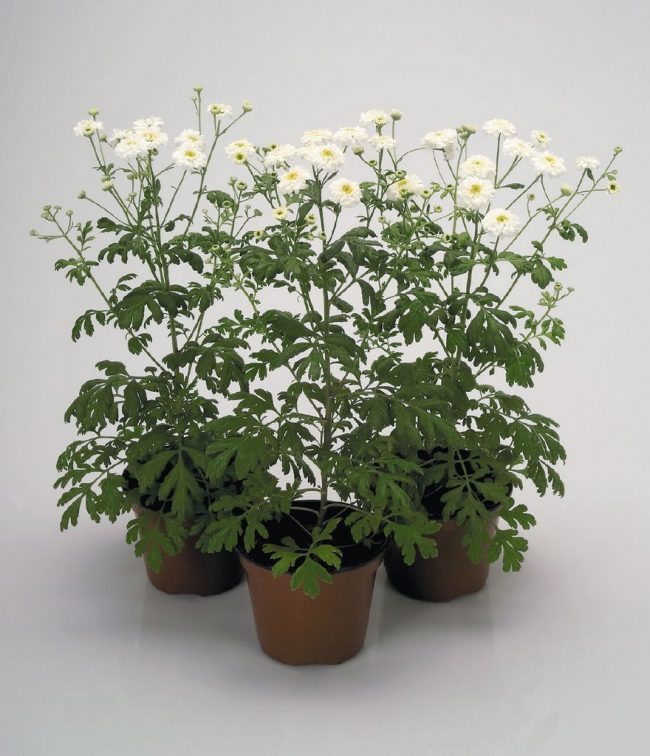

White feverfew in a pot
Advice! When dividing a bush and planting a new plant, you should not shake the soil out of the roots - this will facilitate the adaptation process in a new place.
Diseases and pests
Matricaria has good immunity and, despite its gentle tropical origin, is quite resistant to most pests and diseases. It is even planted next to other plants so that with its aroma it scares away harmful insects.
The plant usually gets sick if the planting conditions are not followed, as well as with improper care. If you plant a flower in a lowland or over-water it, fungal and putrefactive diseases are likely. Let's consider the most probable pathologies of this plant.
Fusarium
This is a fungal disease, very common among garden flowers and shrubs. First, the roots begin to rot, then the stem, and the plant dies. To resist adversity, the matrix is sprayed with the following drugs:
- Phytocide;
- Fitosporin-M;
- Trichodermin.
Rust
Also a fungal disease, which can be recognized by rusty-brown spots on the leaves. These spots are convex, protruding, dry inside. The following drugs help against rust:
- Topaz;
- Strobe;
- Vectra, etc.
Bordeaux liquid can also help, but rather as a preventive measure.
In addition to the above, a disease with powdery mildew is possible, as well as infection with a pest - a root nematode.
Features of feverfew
Most types of pyrethrum are perennials. Among the many species, there are also annuals. Ribbed branched shoots can be erect or ascending, there is pubescence on their surface. The height of the stems is 0.6–1 m. Such plants have a very powerful root system that can penetrate 300 cm deep into the ground. Alternate leaf plates are dissected into narrow segments of various widths. Their front side is green-gray, and the seamy side is gray-ash. The basal leaf plates have grooved petioles, they are a couple of times longer than the leaves themselves. The stem leaf plates also have petioles, which become shorter as they approach the top of the shoot. The diameter of single baskets is from 50 to 60 mm; they are part of the corymbose apical inflorescences. The structure of the baskets includes reed barren marginal and small bisexual median tubular flowers, which are painted in white, red and in all shades of pink. Bloom is observed in May and June. The fruit is a pale brown achene with 5 to 10 ribs, their crown is serrated or lobed. The seeds remain viable for 2 or 3 years.


